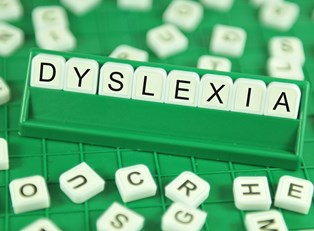Dyslexia is a learning disorder that can hinder a person’s abilities to read, speak, and write. This is sometimes mistakenly identified as a sign of laziness or lack of intelligence. Because a child’s educational needs are primarily based on reading and writing, it’s crucial for dyslexia to be diagnosed as early as possible.
Effects
Depending on the severity of the learning disorder, a person with dyslexia may have difficulties with reading and writing, conveying thoughts, and deciphering the left from the right. Often mistaken as a sign of hearing problems, dyslexia can also cause people to struggle with comprehending verbal communication. Without the proper diagnosis and help, dyslexia can have a major impact on a person’s self-image. The everyday obstacles can also cause stress and a lack of motivation.
Experts
You can get a professional diagnosis from a speech pathologist, licensed psychologist, family physician, or a combination of the three. While a school official is not professionally trained, he or she will have important classroom data that can be instrumental in a child’s diagnosis.
Parents can first look for symptoms that include word mispronunciation and failure to learn letters and numbers. Trouble following directions, reading, and remembering facts can also be signs of dyslexia. Trained professionals can then identify dyslexia through a formal evaluation. In an examination, medical professionals will look at family history, social environment, and areas of weaknesses and strengths. They will also assess an individual’s abilities to speak, write, and comprehend through this series of tests.
Tests
In order to identify speech deficiencies, the person will be asked to identify letters and provide the sounds they make. Speech patterns can usually detect any weaknesses with this form of testing.
The Dynamic Indicators of Basic Early Literacy Skills test (DIBELS) can alert the tester to signs of reading inadequacies. The person undergoing testing reads aloud for one minute from a selected passage on the test. A formula is then used to determine the number of words that were read in this specific amount of time. Based on the outcome, they will fall into a low-risk, moderate-risk, or high-risk performance level.
In order to evaluate a person’s writing abilities, the tester will say certain letters and have person being tested for dyslexia write them down. This can determine if a person has problems with hearing or listening.
Treatment
In order to get a better handle on dyslexia, you should seek testing and treatment as soon as possible. This can be instrumental in how your child does in school and works into adulthood. You work to eliminate the roadblocks of dyslexia by making story time and reading a part of your child's daily activities as early as infancy. As your child develops, you can give him or her the opportunity to practice by reading out loud. With the adequate assistance and treatment, individuals with dyslexia can become excellent at reading and writing.



